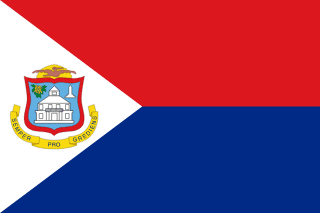Sint Maarten - Introduction

Here, let us take a look at some of the important facts about the country Sint Maarten. Here, we have some interesting facts about Sint Maarten. Sint Maarten (officially: Sint Maarten) is a country in Americas, precisely in Caribbean, with a population of about N/A inhabitants today (2026-01-06). The capital city of Sint Maarten is Philipsburg, and the official country TLD code is .sx. Sint Maarten has cca2, cca3, cioc, ccn3 codes as SX, SXM, N/A, 534 respectively. Check some other vital information below.
Christopher COLUMBUS claimed Saint Martin for Spain in 1493, naming it after the feast day of St. Martin of Tours, but it was the Dutch who occupied the island in 1631 to exploit its salt deposits. The Spanish retook Saint Martin in 1633, but the Dutch continued to assert their claims. The Spanish finally relinquished the island to the French and Dutch, who divided it between themselves in 1648. The border frequently fluctuated over the next 200 years because of friction between the two countries, with the Dutch eventually holding the smaller portion of the island (about 39%) and adopting the Dutch spelling of the island's name for their territory.
The establishment of cotton, tobacco, and sugar plantations dramatically expanded African slavery on the island in the 18th and 19th centuries; the practice was not abolished in the Dutch half until 1863. The island's economy declined until 1939 when it became a free port; the tourism industry was dramatically expanded beginning in the 1950s. In 1954, Sint Maarten and several other Dutch Caribbean possessions became part of the Kingdom of the Netherlands as the Netherlands Antilles. In a 2000 referendum, the citizens of Sint Maarten voted to become a self-governing country within the Kingdom of the Netherlands, effective in 2010. In 2017, Hurricane Irma hit Saint Martin/Sint Maarten, causing extensive damage to roads, communications, electrical power, and housing; the UN estimated that 90% of the buildings were damaged or destroyed.
The establishment of cotton, tobacco, and sugar plantations dramatically expanded African slavery on the island in the 18th and 19th centuries; the practice was not abolished in the Dutch half until 1863. The island's economy declined until 1939 when it became a free port; the tourism industry was dramatically expanded beginning in the 1950s. In 1954, Sint Maarten and several other Dutch Caribbean possessions became part of the Kingdom of the Netherlands as the Netherlands Antilles. In a 2000 referendum, the citizens of Sint Maarten voted to become a self-governing country within the Kingdom of the Netherlands, effective in 2010. In 2017, Hurricane Irma hit Saint Martin/Sint Maarten, causing extensive damage to roads, communications, electrical power, and housing; the UN estimated that 90% of the buildings were damaged or destroyed.
All Important Facts about Sint Maarten
Want to know more about Sint Maarten? Check all different factbooks for Sint Maarten below.
-
 Sint Maarten Factbook
Sint Maarten Factbook
-
 The Economy of Sint Maarten
The Economy of Sint Maarten
-
 Learn about the Government of Sint Maarten
Learn about the Government of Sint Maarten
-
 Communication in Sint Maarten
Communication in Sint Maarten
-
 Popular Universities in Sint Maarten
Popular Universities in Sint Maarten
-
 Enerny in Sint Maarten
Enerny in Sint Maarten
-
 Transport in Sint Maarten
Transport in Sint Maarten
-
 The Geography and society of Sint Maarten
The Geography and society of Sint Maarten
-
 The Environment of Sint Maarten
The Environment of Sint Maarten
-
 Military and security in Sint Maarten
Military and security in Sint Maarten